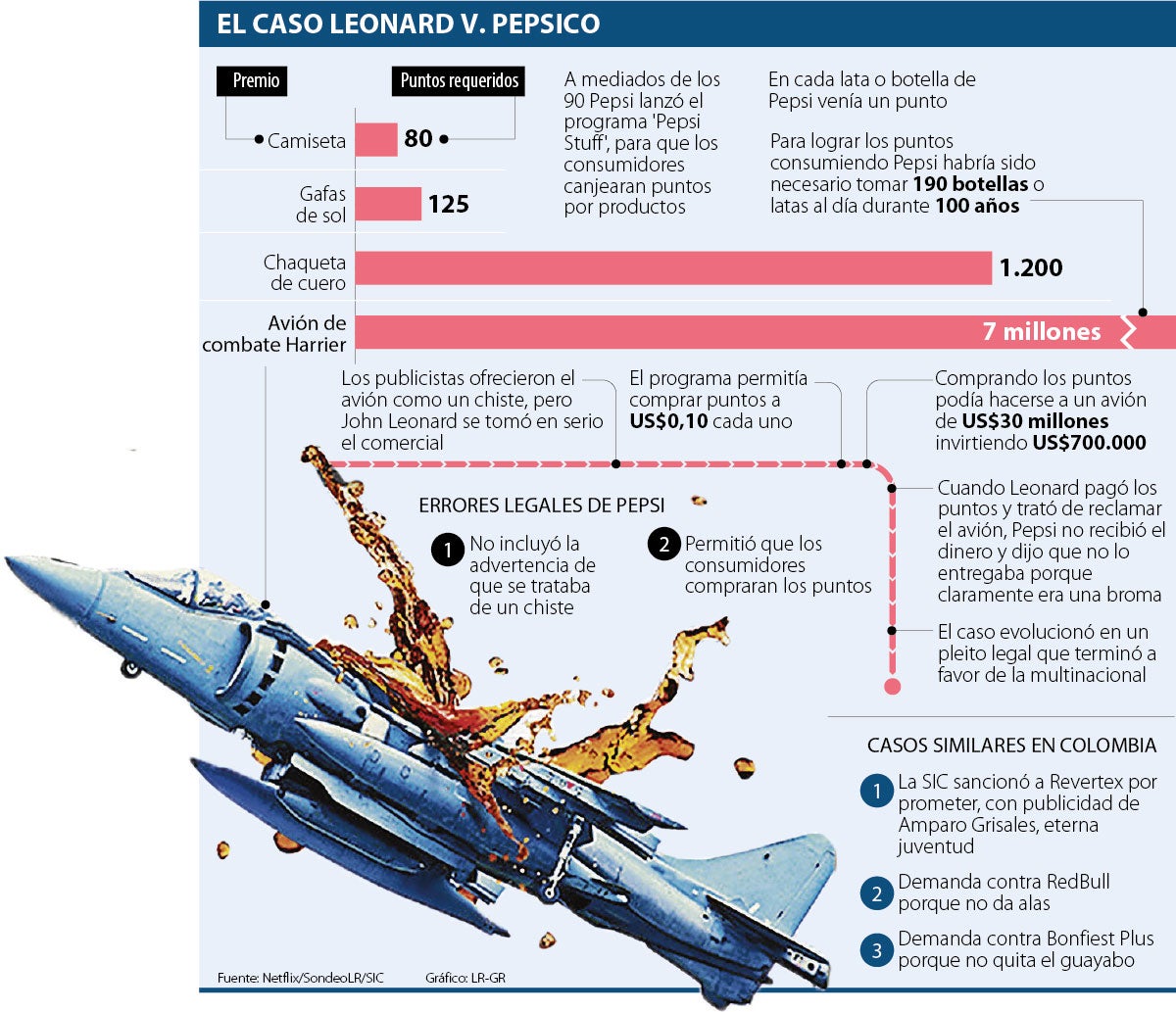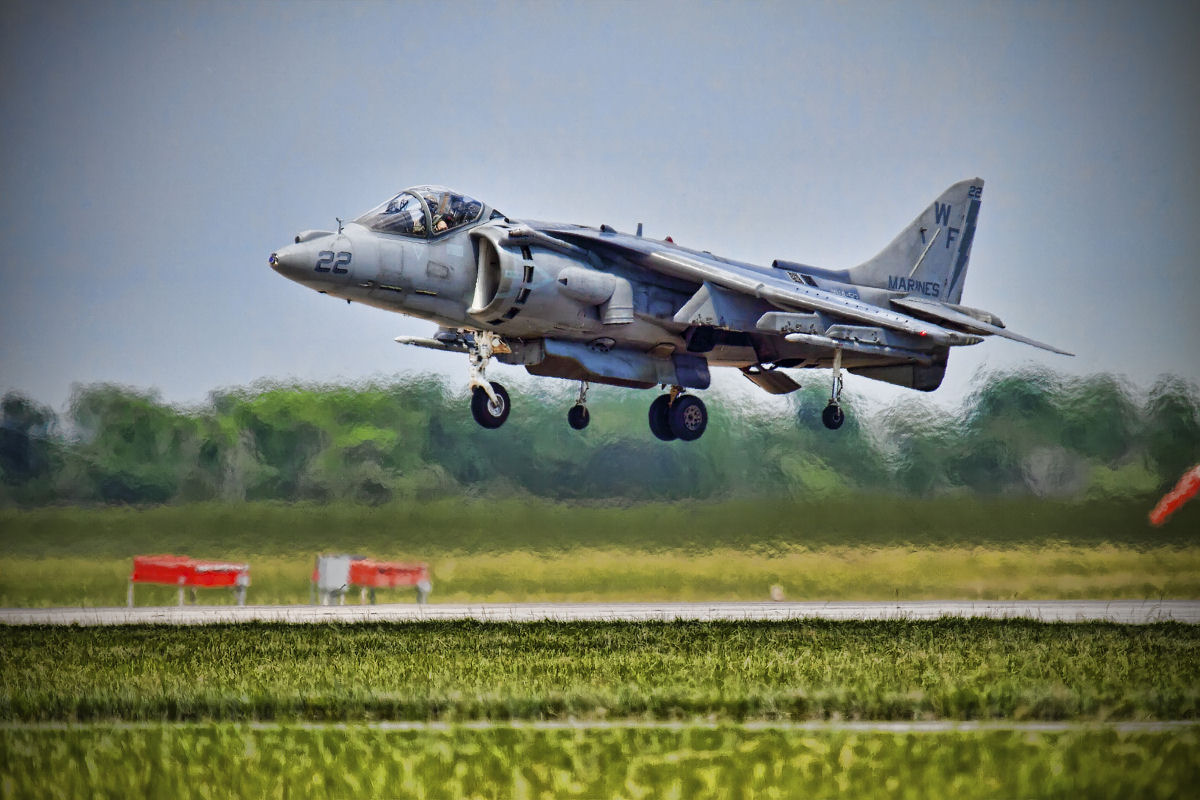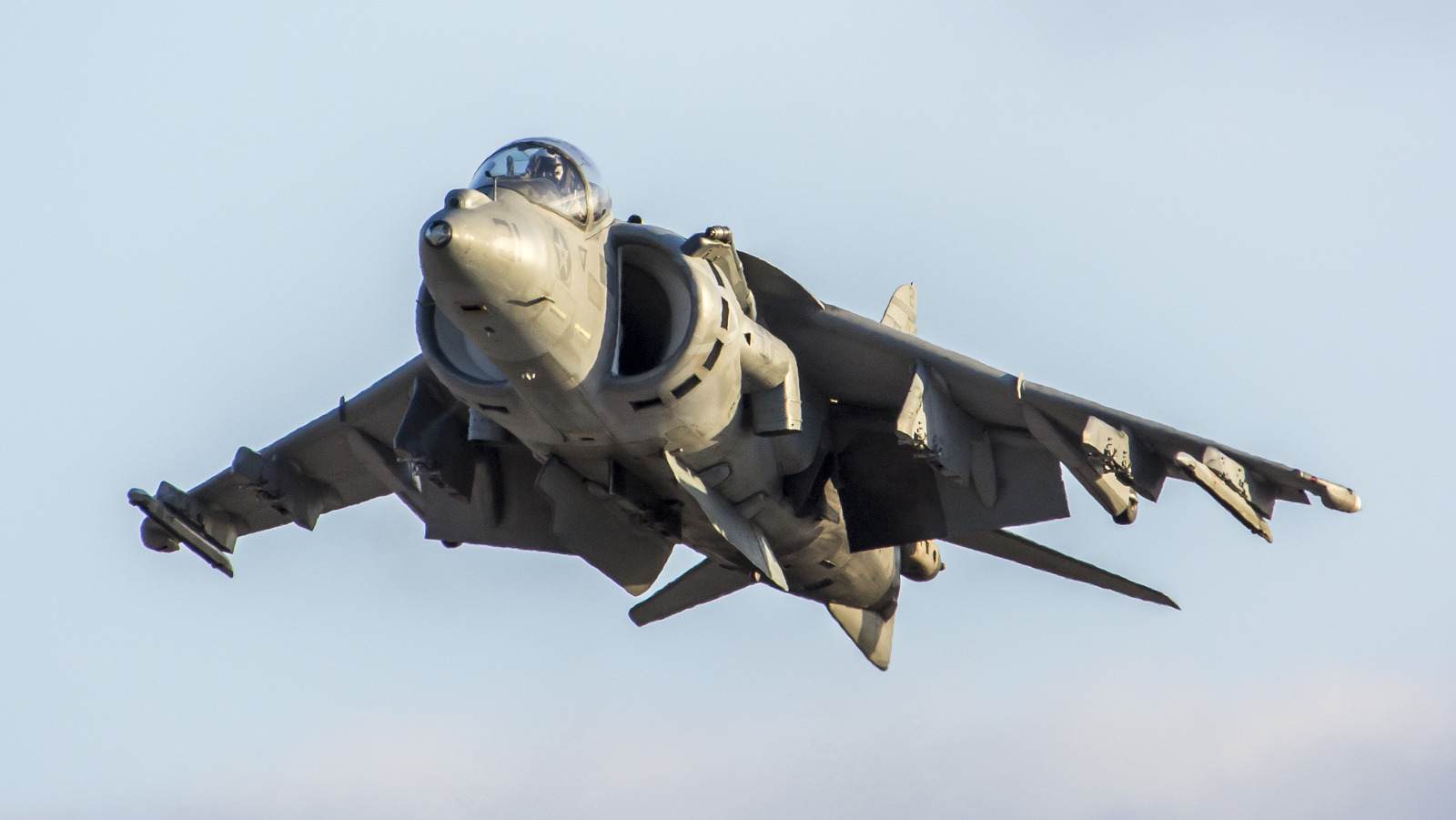Pepsi Harrier Jet - Pepsi's advertising campaign is to encourage people to buy Pepsi in exchange for points that can be redeemed for prizes.
As you prepare to take on the Super Bowl ad, let this 1996 "CBS Evening News" story serve as a reminder not to believe every spot you see - especially if it's a fighter jet victory.
Pepsi Harrier Jet

In the mid-90s, Pepsi-Cola ran a Pepsi Stuff ad campaign when one of the ads sparked a legal dispute. Pepsi was suddenly caught with his foot in his mouth, tongue in cheek.
Th Virtual Fighter Wing Av 8b Texas Livery
As CBS News' John Blackstone reported, the campaign was very simple. Buy Pepsi products, collect points from the Pepsi label and win prizes like t-shirts, glasses or a Harrier Jet with 7 million points.
"Sure beat the bus," said a commercial actor as a computer-animated jet landed on campus. This view played an important role in the resolution of legal disputes that arose later.
The Pepsi spot caught the attention of 21-year-old business student John Leonard, who was only interested in one prize.
"People say you don't want a T-shirt?" and I mean, when there is a Harrier out there for 7 million Pepsi points, why not set your sights a little higher? Leonard said.
The Incredible Story Of Pepsi's Harrier Jet Giveaway
Leonard saw some fine prints. Instead of labels, consumers can buy Pepsi points for ten cents. He did the math and quickly realized he needed $700,000 to buy the Pepsi points he needed for the Harrier Jet. Leonard then hit the phone and convinced five good investors to give him $700,000.
"Tens of millions of Americans and people around the world have seen it, joked and laughed," said John Harris of Pepsi-Cola. "Mr. Leonard saw this opportunity, hired a business consultant and a lawyer and decided to take legal action."
But Pepsi initially asked that Leonard's claim be declared moot. This prompted Leonard to file a counterclaim.

So the question is, is John Leonard the best and brightest of the Pepsi generation, or just a random guy? Blackstone asked questions to several people on the street, who all seemed to support Leonard.
Pepsi Got Into A Legal Battle With A College Student Over Harrier Jet
"Maybe he's being rude, but I'd say if he made that claim, if he couldn't back it up, it shouldn't have been aired," another person said.
"You've got people doing really smart work here," Werklin said. "I'm going to tour around the country. I'm going to turn it into a TV commercial."
Pepsi doesn't do that. In addition to the legal action, he renewed the commercial by increasing the number of points required for the jet from 7 million to 700 million.
Eventually, Leonard's trial ended. The court granted summary judgment in favor of Pepsi, ruling that "no objective person could conclude that the Harrier Jet was offered to commercial consumers."
Watch Pepsi, Where's My Jet?
The court also added the reason for rejecting the case: "The young man shown in the ad is an unreliable pilot who can be trusted with the keys to his parents' car, especially as a prize fighter. The US Marine Corps. "None of us. not affected by advertising. Whether we like it or not, we love it, we do it, and we eat candy bars to keep our anger at bay. The company will be working hard to gain more market share, especially in the midst of a culture war for hearts and fridge space.
Coca-Cola and Pepsi-Cola have been locked in a war for more than a century. At that time, both companies have tried everything from changing the sign formula to blind taste tests to prove that King of Cola. For the time being, Pepsi is playing second fiddle to giant Coca-Cola. "Pepsi is okay?" must be one of the most commonly used phrases in restaurants.
Then, in the mid-1990s, an obscure ad and a student with a plan led to one of the strangest moments of the Coke Wars. In the end, Pepsi was locked in a one-man legal battle over ownership of high-tech military aircraft.

In 1996, Pepsi announced a new advertising campaign called Pepsi Stuff. Consumers can collect points from specially designated Pepsi product packages and redeem them for merchandise, many of which feature the Pepsi logo. Consumers cut out dots from 2-liter and 12-packs and send them with an order form to exchange shirts, hats, and mountain bikes.
Pepsi, Where's My Jet: Where Are Todd Hoffman And John Leonard Today?
These types of rewards programs are everywhere these days, but they are relatively revolutionary. According to The New York Times, Pepsi modeled the Pepsi Stuff campaign on Philip Morris' Marlboro Gear. The estimated cost of the Pepsi Stuff program is $200 million, of which $125 million is for consumer purchases. Pepsi called it the biggest advertising campaign in the company's history at the time.
The program asked surprisingly. Almost immediately, consumers began receiving points on top Pepsi products to increase the number of points they earned. People have become so good at claiming rewards that Pepsi has cut back on advertising. According to The Wall Street Journal, the buyback rate was about 50% higher than the company had expected, creating problems for Pepsi and the premium-segregated bottlers.
To get the Pepsi Stuff program, the company moved to the marketing stage, releasing ads promoting the rewards program. One ad shows a teenager winning various prizes with Pepsi Points. He was first seen wearing a Pepsi brand T-shirt. Later, he wore a Pepsi brand leather jacket. Then, after leaving the house, the couple jumped into the mirror. As each gift product is created, its name is displayed on the screen with the corresponding Pepsi Points value. The shirt will cost 75 points, the leather jacket will cost 1,450 points, and the sunglasses will cost 175.
The commercial pans over a group of kids looking at a Pepsi Stuff catalog in the shadows and the wind blowing through an open window and handing out papers in class. Then a Harrier jet slowly entered the school grounds, revealing a boy in the pilot's seat. As they exit the jet and onto the lawn, two lines of text appear on the screen: Harrier Fighter, 7,000,000 Pepsi Points. The kid moves off the jet (presumably to school) and a Pepsi Stuff sign appears on the screen. "Drink Pepsi. It makes sense: Buy enough Pepsi and you will get your jet lag. At least, that's the comment of one person.
Pepsi, Where's My Jet: Did He Get The Jet & Where Is He Now? |
The 90s were a time of extremes, and the Harrier jet at the end of the commercial is an example. Back then, companies took every opportunity to make products that looked brighter, funnier, and cooler. When all else fails, put the jet on. Most people understand the commercial as what Pepsi intended to be, a fancy word designed to drum up excitement for the Pepsi Stuff program, and nothing else. And then there was John Leonard.
The AV Club reported that Leonard was a student when the Pepsi Stuff ad aired, and he immediately saw an opportunity. The Harrier jet was worth more than $20 million at the time, with some estimates even exceeding $30 million, which is unfathomable to the average person. But the Pepsi Stuff ad, if the ad is to be believed, allows the U.S. military to have weather gems at a fraction of the cost.
Even some quick napkin math shows that earning 7 million Pepsi points costs a lot less than buying a jet. The only problem is that Pepsi Stuff is a limited-time offer, so Leonard needs to collect points and act fast to get the jet.

With his goal in mind, Leonard began to cut the numbers at the exact spot. At the time, each 12-pack of Pepsi was worth five Pepsi Points. To get the 7 million points he needs, Leonard needs to buy 1.4 million packages worth more than $4 million. That's a lot of money, and a lot of Pepsi, but if Leonard had a jet, he'd make about $20 million in investments, give or take a few million.
Pepsi: They Thought No One Could Drink Enough To Win A Military Jet. Then John Leonard Came Along
Of course, that would leave Leonard with 16,800,000 cans of Pepsi to use. For the next 3,800 years, he could drink 12 packs a day and still be there
Ruger 556 review, vg6 epsilon 556 review, msar stg 556 review, sinn 556 review, sinn 556 i review, meridian 556 review, eotech 556 review, precor efx 556 elliptical review, benchmade 556 review, surefire sfmb 556 review, precor efx 556 review, sinn 556 anniversary review
0 Comments